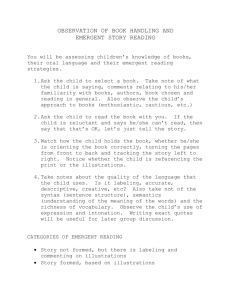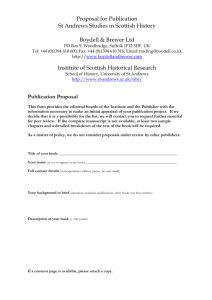elacc3ri7
advertisement
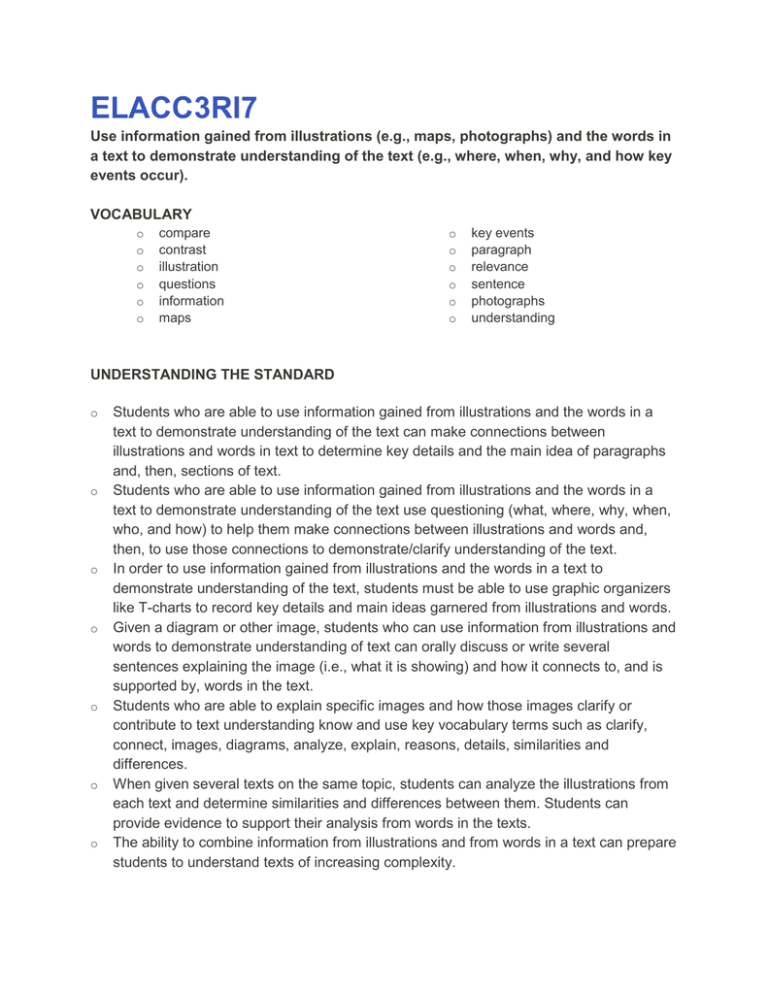
ELACC3RI7 Use information gained from illustrations (e.g., maps, photographs) and the words in a text to demonstrate understanding of the text (e.g., where, when, why, and how key events occur). VOCABULARY o o o o o o compare contrast illustration questions information maps o o o o o o key events paragraph relevance sentence photographs understanding UNDERSTANDING THE STANDARD o o o o o o o Students who are able to use information gained from illustrations and the words in a text to demonstrate understanding of the text can make connections between illustrations and words in text to determine key details and the main idea of paragraphs and, then, sections of text. Students who are able to use information gained from illustrations and the words in a text to demonstrate understanding of the text use questioning (what, where, why, when, who, and how) to help them make connections between illustrations and words and, then, to use those connections to demonstrate/clarify understanding of the text. In order to use information gained from illustrations and the words in a text to demonstrate understanding of the text, students must be able to use graphic organizers like T-charts to record key details and main ideas garnered from illustrations and words. Given a diagram or other image, students who can use information from illustrations and words to demonstrate understanding of text can orally discuss or write several sentences explaining the image (i.e., what it is showing) and how it connects to, and is supported by, words in the text. Students who are able to explain specific images and how those images clarify or contribute to text understanding know and use key vocabulary terms such as clarify, connect, images, diagrams, analyze, explain, reasons, details, similarities and differences. When given several texts on the same topic, students can analyze the illustrations from each text and determine similarities and differences between them. Students can provide evidence to support their analysis from words in the texts. The ability to combine information from illustrations and from words in a text can prepare students to understand texts of increasing complexity. o o o o The ability to use both illustrations and words in a text to answer “where”, “when”, “why” and “how” questions can enable students to demonstrate understanding of the overall text. Collective analysis of information gained from both illustrations and words in a text is an example of an interactive reading strategy, which can promote a deeper understanding of the text. The ability to combine information from both illustrations and words to make meaning can support students in their writing and oral presentations. The ability to derive meaning from both illustrations and words in a text can support text comprehension in other content areas, including science, social studies, and mathematics. QUESTIONS TO FOCUS INSTRUCTION o o o o o o What is the value of maps, photographs and images to the meaning of text? What skills are required to make valid connections between text and illustrations? What prerequisite skills must students have mastered in order to succeed with this standard? (question responses; question generation; ability to identify main idea and supporting details, ability to explain information conveyed by maps, photographs, images, and illustrations). What questions must be asked and answered to help the reader gain skills in connecting illustrations with the words in the text in order to derive meaning? What is the most effective way to assess that students understand the connection between text and the accompanying illustrations and can use that understanding to derive meaning from what is read? What level of academic vocabulary knowledge is required for students to be able to independently make connections between illustrations and words in text to demonstrate their understanding of the text. In other words, what vocabulary terms must they know and use easily?
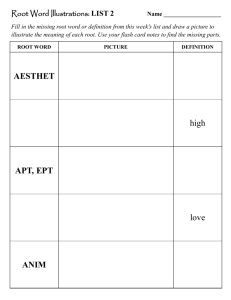
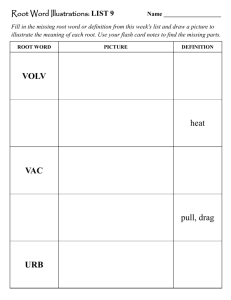

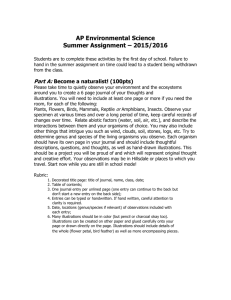
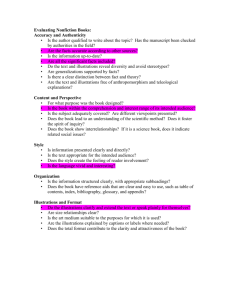
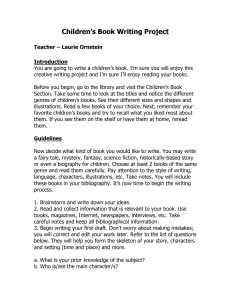
![Creating Worksheets [MS Word, 78 Kb]](http://s3.studylib.net/store/data/006854413_2-7cb1f7a18e46d36d8c2e51b41f5a82fa-300x300.png)
